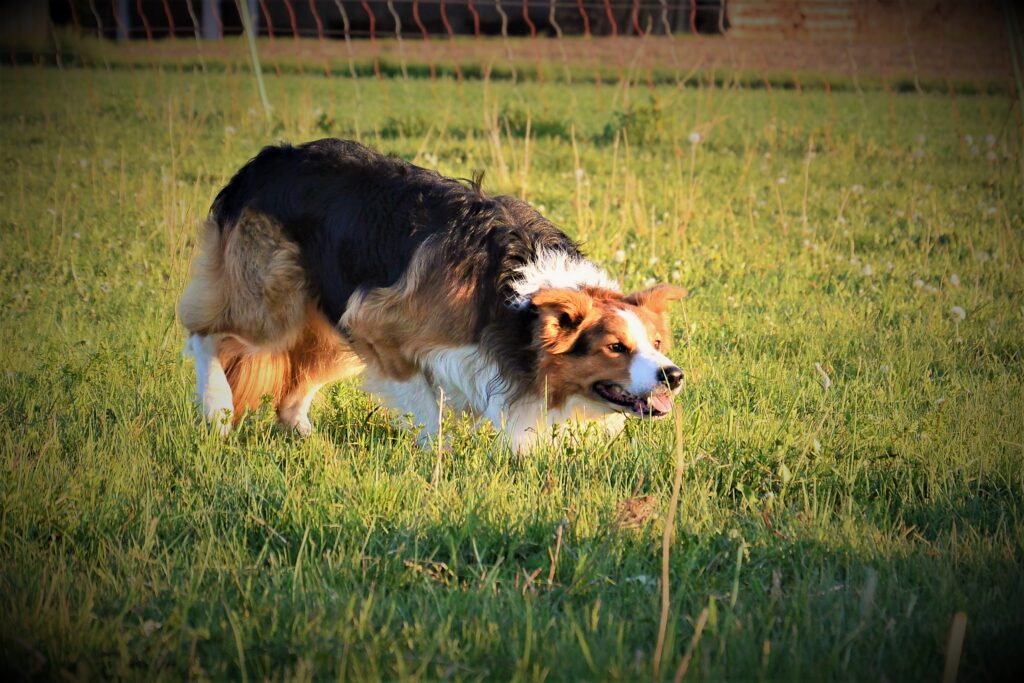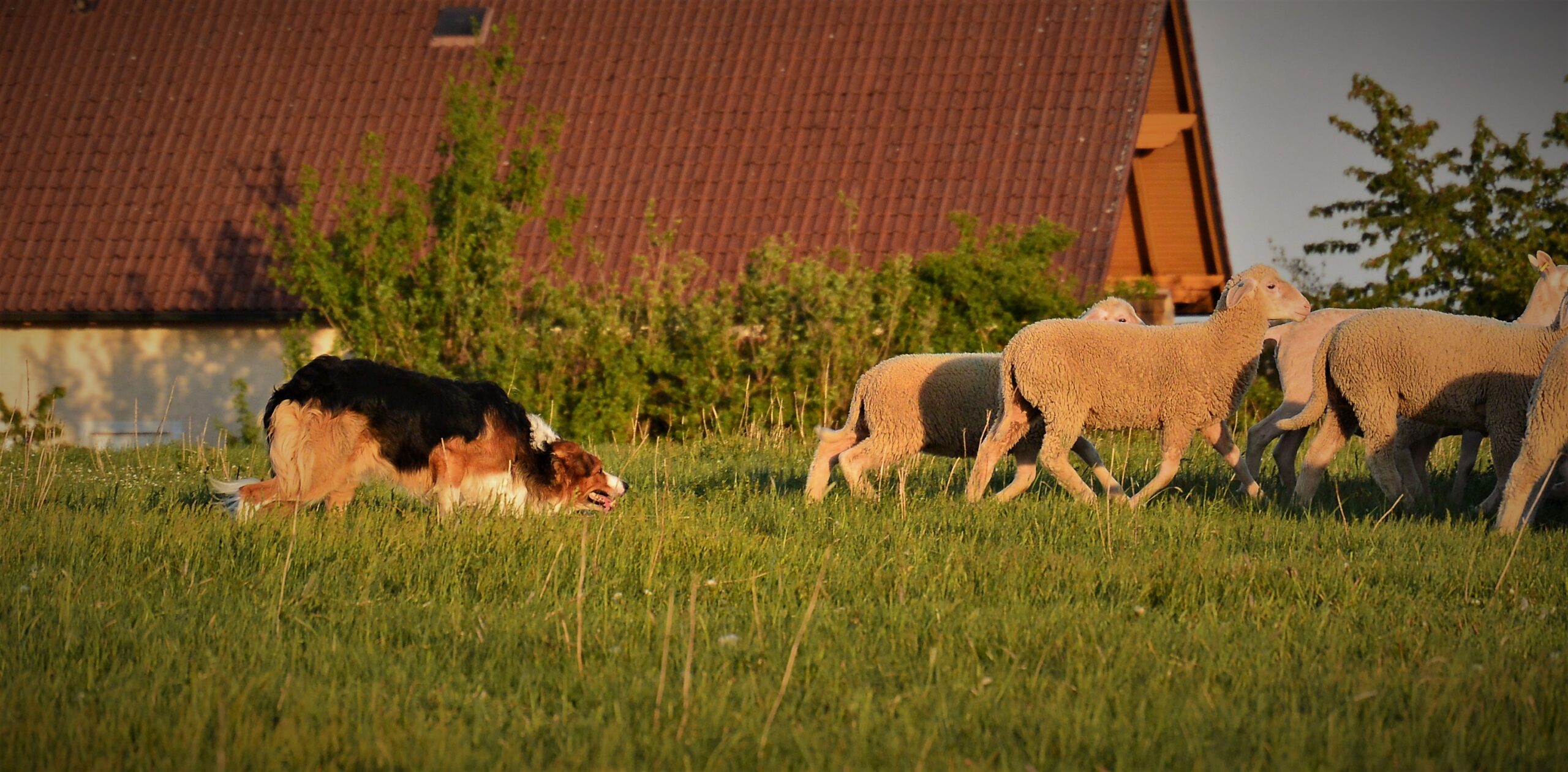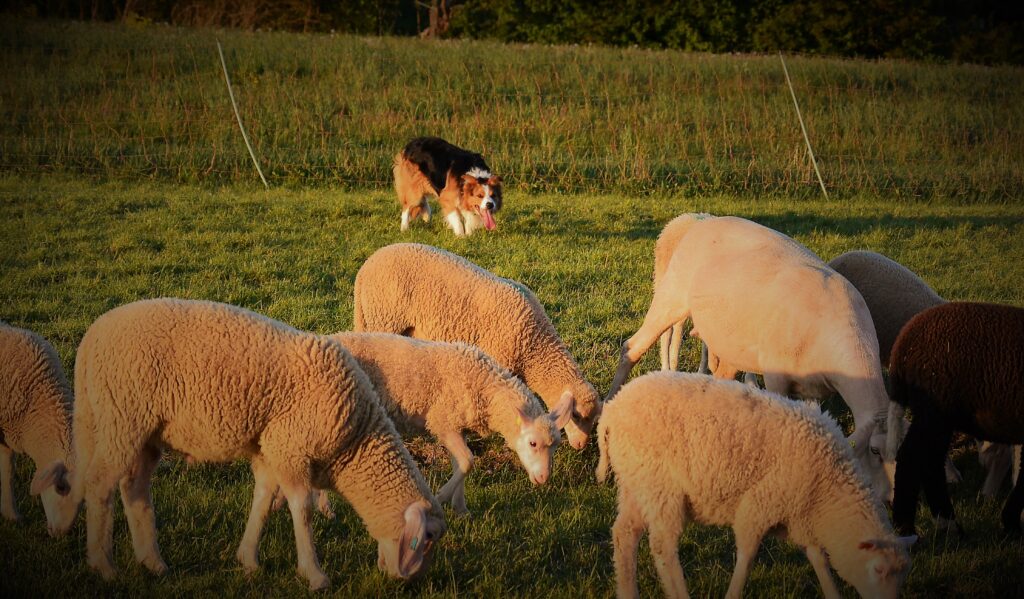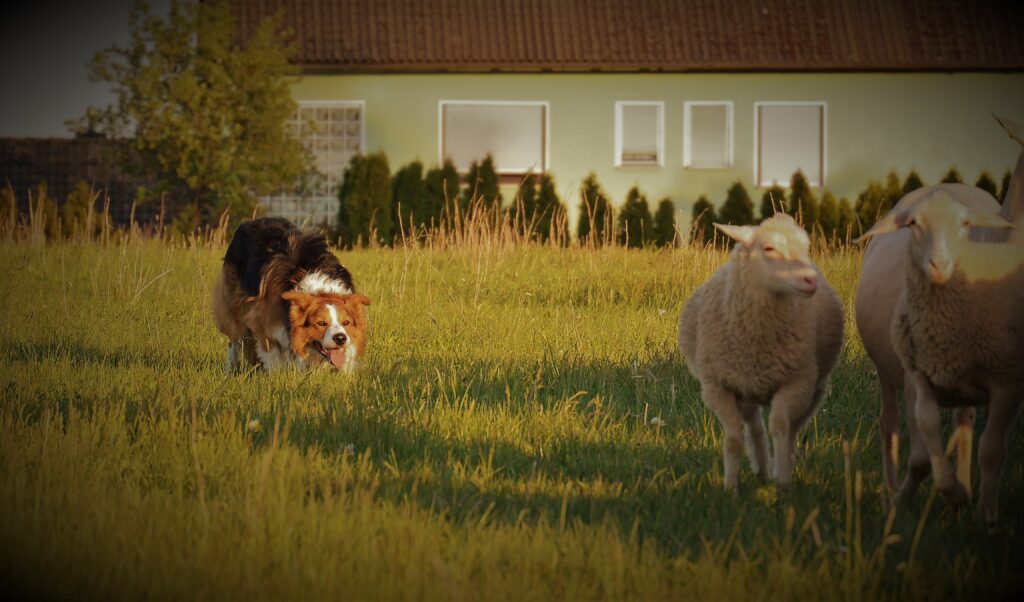Apart from any competition, the Border Collie is an indispensable helper for many shepherds in Germany. He helps to gather the sheep in one area, to relocate them safely to a new area, to load them onto a trailer or to sort them. The tasks are as varied as sheep farming itself. Some may rightly remark that the sheep can be handled just as well without a dog, namely with feed. This is not entirely true, primarily for two reasons: 1. only small groups can be brought under control in this way, and 2. as soon as sheep notice that the lure puts them in an unpleasant situation, they refuse to cooperate – sheep are by no means stupid.


With a well-trained dog, any work on the sheep can be done much faster and easier than without a dog. For this, however, the dog must also be well trained. A well-trained dog is also the pride of the shepherd and people have long enjoyed competing with their colleagues, because someone has to have the best dog. These competitions are called Sheepdog Trials and are also very popular in Germany.

We do not train mainly for Sheepdog Trials, but mostly for daily work, or simply not at all because we work and have no energy left for training. In different working situations you can see what your dog is capable of, if he can stand the pressure to perform in the situation or not. Some typical work can be found in our videos. By the way, Marley has got a special side job due to his abilities, because he is the only dog we can use for training young junior dogs as a cotrainer. Over the years, he has helped several young dogs to start their working careers.
General information about herding
There is no doubt that it is fascinating to watch a Border Collie at work, the body is tense, the gaze concentrated and every command, no matter how fine, is immediately put into action. Even for people who otherwise have little to do with dogs, it is immediately obvious how special this behaviour is.
In order to understand why a Border Collie shows this behaviour, it is important to keep in mind the underlying mechanisms and the tasks for which the dogs have been selected over centuries.
One of the biggest misconceptions about the Border Collie breed is the origin of its herding behaviour – because the Border Collie does not herd, it hunts! This means that the behaviour shown on the sheep follows a certain pattern, namely hunting behaviour, which incidentally every dog breed has in varying degrees. This includes: Orientation – Fixation – Creeping – Chasing – Grabbing – Killing – Eating. In the Border Collie the sequences orientate – fix – sneak – chase have been strengthened by selective breeding and the other sequences, i.e. pack – kill – eat, have been weakened. Orientation often becomes apparent immediately after getting out of the car, the dog looks around and prefers to search for the sheep with his eyes. Once he has found them, fixation with a fixed gaze follows immediately, which is also called showing the eye. If the shepherd gives the command to catch up with the sheep, the transition to creeping up on the prey takes place, which is usually composed of circling the flock and stalking from behind, this is also called outrun and lift. Once the dog has crept far enough towards the sheep, they move away from the dog due to the escape behaviour. By positioning the dog specifically, the sheep can be steered in a certain direction. The most common way is for the dog to bring the sheep towards the human first, this is also known as fetch and is particularly easy for dogs with good balance. It is the most natural of all tasks for the dog. A little less popular is driving the sheep away from the human, as this contradicts their nature to bring the sheep to the human. Nevertheless, this activity makes sense, because only a dog that can move the animals independently of the shepherd’s position is able to perform more demanding tasks such as penning, loading or separating the sheep.
The Border Collie was bred to gather shy and widely scattered sheep in the Scottish mountains and bring them to their master. The master likes to stand on the neighbouring hill from where he has a good view and can direct the dog to the sheep.
If the above-mentioned behaviours are brought under control by the dog handler and can thus be used, then one has an excellent employee who helps with everyday challenges. If these behaviours are not controlled, the dogs often start to chase cyclists, cars or other moving objects.
